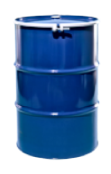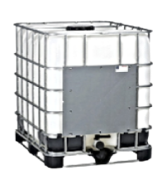Our Supply Capability
One barrel of diesel weighs approximately 839.5 kilogram or 159 liters In the oil industry, one barrel (unit symbol bbl) is a unit of volume used for measuring oil defined as exactly 42 US gallons, approximately 159 liters, or 35 imperial gallons.
Standard procedure for container loading:
1. Quotation and POP will be provided by the seller.
2.Proforma invoice and Sales Purchase agreement will be provided by the seller.
LC ( Letter of credit):
1. Payment by 100% LC at sight. 100% irrevocable, transferable, confirmable letter of credit payable at sight in favor of Ametheus Commodities Pvt Ltd. L/C to be opened by First class International Bank.
Advance:
1. Payment terms: 50% prepayment & 50% against scanned copy of BL.
2. Lesser amount of prepayment is possible only in the case of:
(A) The size of prepayment will be not less than 30%
(B) Payment of the remaining amount against scanned copy of BL no later than 5 days after the dispatch of the vessel (the flow of funds to the account should occur within this period)
(C) In case the balance payment received not in time, the containers will be turned back to us or redirected to other buyer without the prepayment being refunded back to your Company’s bank account
Standard procedure for bulk tanker loading under CPA:
Details and Queries for Smooth Execution
- Cargo Origin:
- Specify the origin of the cargo.
- Seller Information:
- Confirm the identity and location of the seller. Are they the titleholder of the goods?
- Bank Details:
- Share the name of the seller and their bank. The buyer will align their banking accordingly (ensuring the seller’s bank is a globally recognized prime bank).
- FOB TTV Port Availability:
- Confirm if the seller can supply at the following ports:
- Qatar: Ras Laffan Port
- Oman: Sohar Port
- UAE: Fujairah
- Russia: Novorossiysk, Primorsk, Vladivostok, Kozmino
- Europe: Rotterdam
- China: Dalian, Qingdao, Tianjin
- Confirm if the seller can supply at the following ports:
- Supply Quantities:
- Confirm the quantities available for supply (up to 300,000 MT/month).
- Shipment Sizes:
- Provide the minimum and maximum shipment sizes to help the buyer plan vessels accordingly.
- Competitive Pricing:
- Share the most competitive pricing, considering the large volumes the buyer is willing to lift.
- Procedure Adherence:
- Confirm adherence to this globally accepted procedure proscribed below:
FOB TTV Procedure for EN590 10 PPM
- Issuance of ICPO by Buyer:
- The buyer issues a signed Irrevocable Corporate Purchase Order (ICPO) on their company’s letterhead.
- Seller Issues Commercial Invoice (CI):
- The seller issues the CI for the buyer to review, sign, and return within 24 hours along with the Charter Party Agreement (CPA).
- Note: If the buyer is convinced of the seller’s ability to deliver, they will provide the following:
- a. CPA along with the ICPO
- b. Q88 (Vessel Questionnaire) along with the reviewed and signed CI
- Seller Provides Partial Proof of Product (PPOP):
The seller issues the following PPOP documents:- a. Commitment to Supply
- b. Authorization to Sell and Collect (ATSC)
- c. Certificate of Origin (EUR1 Certificate)
- d. Product Passport/Quality Analysis
- e. Fresh SGS report (not older than 48 hours)
- f. Injection Report (if applicable)
- Buyer’s Verification of PPOP:
- The buyer verifies and confirms the PPOP documents within 48 hours.
- Seller Issues Tank and Transfer Documentation:
- The seller provides the following documents to the buyer, who must confirm receipt within 24 hours:
- a. Valid Tank Storage Receipt (TSR)
- b. Terminal Access Code (TAC)
- c. Hub Number
- d. Authorization to Verify (ATV)
- e. Booking Number
- f. Dip Test Authorization (DTA)
- The seller provides the following documents to the buyer, who must confirm receipt within 24 hours:
- Dip Test Appointment:
- The buyer appoints SGS or another independent inspection company to conduct the Dip Test at the seller’s tank within 24 hours.
- The test will occur in the presence of the buyer’s representative.
- Payment Upon Dip Test Completion:
- Upon successful completion of the Dip Test, the buyer remits payment as per the invoice via MT103/TT.
- Cargo and Title Transfer:
- Once the seller confirms receipt of clean and clear funds into their nominated bank account, the cargo is transferred to the buyer, and the Title of the product is also transferred.
- Vessel Departure:
- The vessel is allowed to depart the port only after full payment and transfer of the cargo and title to the buyer.
EN 590 MOPS (Mean of Platts Singapore) is the average of a set of Singapore-based oil product price assessments published by Platts, a global energy, petrochemicals, metals and agriculture information provider and a division of S&P Global. MOPS, or Mean of Platts Singapore, is a benchmark price for refined products in the Singapore region. It’s calculated by averaging a set of oil price assessments published by Standard and Poor’s Platts, a Singapore-based market wire service. The time frame for the average can be a week, a month, or any agreed period of time.
EN 590 is the standard for automotive diesel fuel sold in the European Union and other European countries. It’s also known as ultra-low sulfur diesel (ULSD). The EN 590 standard describes the physical properties that all automotive diesel fuel must meet.
Why Platts FOB Singapore Gasoil is a key pricing benchmark?
The term ‘Platts FOB Singapore Gasoil’ refers to the physical price of gasoil loading on FOB Straits 15-30 days forward from the date of publication. Gasoil grades assessed by S&P Global Commodity Insights include 2500 ppm, 500 ppm, 50 ppm and 10 ppm sulfur gasoil.
The Gasoil benchmark price is the primary physical market pricing reference for gasoil loading or delivered to traders, refiners and end users in Asia.
Underpinned by firm economic growth in Asia, demand for the multi-use fuel has grown and now Asia is a leading producer of gasoil as well as a key consumer, thus making the FOB Singapore Gasoil assessment a key pricing benchmark for the whole world.
How do we assess Platts FOB Singapore Gasoil?
S&P Global Commodity Insights Singapore physical gasoil assessments reflect a minimum of 150,000 barrels, maximum 250,000 barrels, loading 15-30 days forward from the date of publication. Market participants should specify loading for a five-day date range at the time of submitting a bid of offer for publication in the assessment process.
Platts gasoil assessments are assessed by S&P Global Commodity Insights on a Market on Close assessment process basis.
Evolution of Platts FOB Singapore Gasoil
From January 2, 2018, Platts FOB Singapore, FOB Arab Gulf, FOB Arab Gulf LR2 and FOB Korea Gasoil assessments by S&P Global Commodity Insights will begin to reflect maximum 10 ppm sulfur. The following assessments and codes will be affected:
Assessment Codes
- FOB Singapore Gasoil POABC00
- FOB Arab Gulf Gasoil POAAT00
- FOB Arab Gulf LR2 Gasoil AAKBT00
- FOB Korea Gasoil POAIE00
S&P Global Commodity Insights will also assess differentials and strips in these markets basis gasoil with maximum 10 ppm sulfur.
Note that Platts C+F Japan Gasoil assessment already reflects maximum 10 ppm sulfur gasoil.





